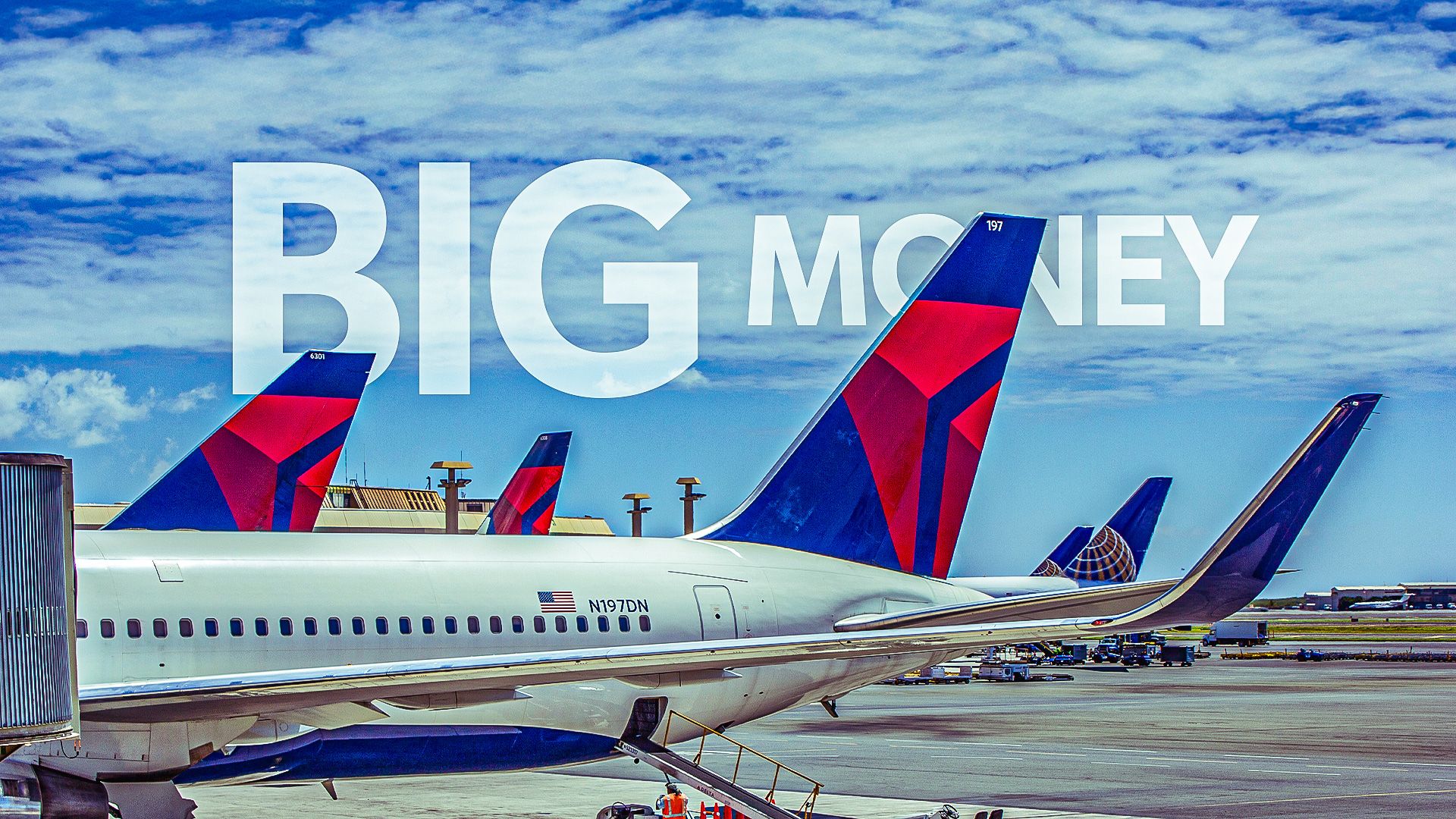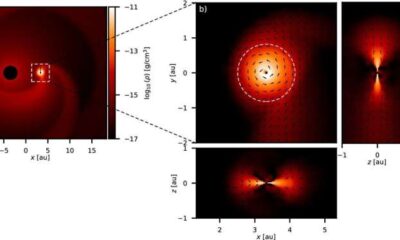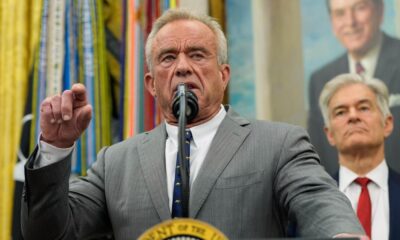World
Airline CEOs’ Salaries Surge Post-CARES Act: A Deep Dive

The compensation of airline CEOs in the United States has experienced significant growth following the expiration of the CARES Act in 2023. This legislation, initially designed to provide financial relief during the COVID-19 pandemic, imposed restrictions on executive pay, limiting CEOs to a maximum of $3 million annually. With the Act’s end, airline executives have seen their salaries rebound dramatically, reflecting a broader trend in the commercial aviation sector.
CEO Compensation Trends in 2024
In 2024, the first full year after the CARES Act restrictions were lifted, CEO salaries have seen remarkable increases. For instance, Scott Kirby, CEO of United Airlines, saw his total compensation soar to $33.9 million, nearly doubling from $18.6 million in 2023. Similarly, Ed Bastian of Delta Air Lines earned $27.1 million, although this represented a decrease from $34.2 million in the previous year. The compensation breakdown for the CEOs of the four largest US airlines illustrates the disparities in pay structures:
– **United Airlines (UA)**: Scott Kirby – Base Salary: $1.2M, Bonus: $3M, Non-Equity Incentive: $5.1M, Stock Awards: $24.4M, Total: $33.9M
– **Delta Air Lines (DL)**: Ed Bastian – Base Salary: $1.5M, Bonus: $3M, Non-Equity Incentive: $11.6M, Stock Awards: $11M, Total: $27.1M
– **American Airlines (AA)**: Robert Isom – Base Salary: $1.2M, Bonus: $2M, Non-Equity Incentive: $5.4M, Stock Awards: $7M, Total: $15.6M
– **Southwest Airlines (WN)**: Bob Jordan – Base Salary: $1.2M, Bonus: $2M, Non-Equity Incentive: $2.4M, Stock Awards: $5M, Total: $10.6M
These figures highlight the influence of stock awards and non-equity incentives, which significantly elevate total compensation despite base salaries that may seem more reasonable.
Factors Impacting Executive Pay
Several factors have contributed to the fluctuations in CEO pay. Each airline employs distinct strategies for structuring executive compensation. In the case of United Airlines, stock performance in 2024 markedly outpaced its competitors, leading to higher equity compensation for Kirby. Delta Air Lines maintained consistent profitability, which bolstered its operational metrics and, consequently, CEO pay.
Conversely, American Airlines adjusted Robert Isom’s compensation downwards in response to a mixed financial performance and shareholder concerns, resulting in a more modest total compared to 2023. Southwest Airlines, known for its conservative approach to corporate governance, kept Bob Jordan’s pay lower than that of his peers, despite facing activist pressures.
The comparison of compensation over the past few years shows stark contrasts. For example, in 2023, Isom’s compensation was inflated by a one-time payout related to the CARES Act, as American Airlines received substantial taxpayer support during the pandemic.
The following table summarizes the CEO compensation across the years:
– **Scott Kirby, United Airlines**: 2024 – $33.9 million; 2023 – $18.6 million; 2022 – $9.8 million
– **Ed Bastian, Delta Air Lines**: 2024 – $27.1 million; 2023 – $34.2 million; 2022 – $9.6 million
– **Robert Isom, American Airlines**: 2024 – $15.6 million; 2023 – $31.4 million; 2022 – $4.9 million
– **Bob Jordan, Southwest Airlines**: 2024 – $10.6 million; 2023 – $9.3 million; 2022 – $5.3 million
CEO Pay vs. Employee Compensation
The disparity between CEO compensation and that of average airline employees raises questions about equity in corporate America. According to a recent analysis by Forbes, the pay ratios between the CEOs of the four major US airlines and their average employees are noteworthy:
– **Scott Kirby, United Airlines**: 380-to-1
– **Ed Bastian, Delta Air Lines**: 258-to-1
– **Robert Isom, American Airlines**: 191-to-1
– **Bob Jordan, Southwest Airlines**: 115.5-to-1
While these ratios reflect a significant gap, they are comparatively lower than those found in some other industries, such as retail, where the CEO-to-worker pay ratio can exceed 6,000-to-1. Nevertheless, critics argue that any substantial gap is troubling, especially given the backdrop of government support during the pandemic.
Public sentiment has turned critical regarding high executive pay, especially when airlines received substantial taxpayer funding to navigate the economic downturn. Passengers express frustration over cramped seating and inconsistent service, attributing these issues to a focus on profits that prioritizes executive compensation over customer experience.
Despite the backlash, some defend the high salaries, suggesting they are necessary to attract and retain top talent in a challenging industry. However, many argue that such high compensation levels contribute to a culture of inequity in corporate America.
In summary, the rising salaries of airline CEOs in the wake of the CARES Act’s expiration highlight ongoing debates about corporate governance, equity, and the value placed on executive leadership in a high-stakes, low-margin industry. As airlines continue to navigate a post-pandemic landscape, the conversation around executive compensation remains ever-relevant.
-

 Science1 month ago
Science1 month agoOhio State Study Uncovers Brain Connectivity and Function Links
-

 Politics1 month ago
Politics1 month agoHamas Chief Stresses Disarmament Tied to Occupation’s End
-

 Science1 month ago
Science1 month agoUniversity of Hawaiʻi Joins $25.6M AI Project for Disaster Monitoring
-

 Entertainment1 month ago
Entertainment1 month agoMegan Thee Stallion Exposes Alleged Online Attack by Bots
-

 Science3 weeks ago
Science3 weeks agoALMA Discovers Companion Orbiting Giant Star π 1 Gruis
-

 Science2 months ago
Science2 months agoResearchers Challenge 200-Year-Old Physics Principle with Atomic Engines
-

 Entertainment1 month ago
Entertainment1 month agoPaloma Elsesser Shines at LA Event with Iconic Slicked-Back Bun
-

 World1 month ago
World1 month agoFDA Unveils Plan to Cut Drug Prices and Boost Biosimilars
-

 Top Stories1 month ago
Top Stories1 month agoFederal Agents Detain Driver in Addison; Protests Erupt Immediately
-

 Business1 month ago
Business1 month agoMotley Fool Wealth Management Reduces Medtronic Holdings by 14.7%
-

 Entertainment1 month ago
Entertainment1 month agoBeloved Artist and Community Leader Gloria Rosencrants Passes Away
-

 Politics2 months ago
Politics2 months agoNHP Foundation Secures Land for 158 Affordable Apartments in Denver









